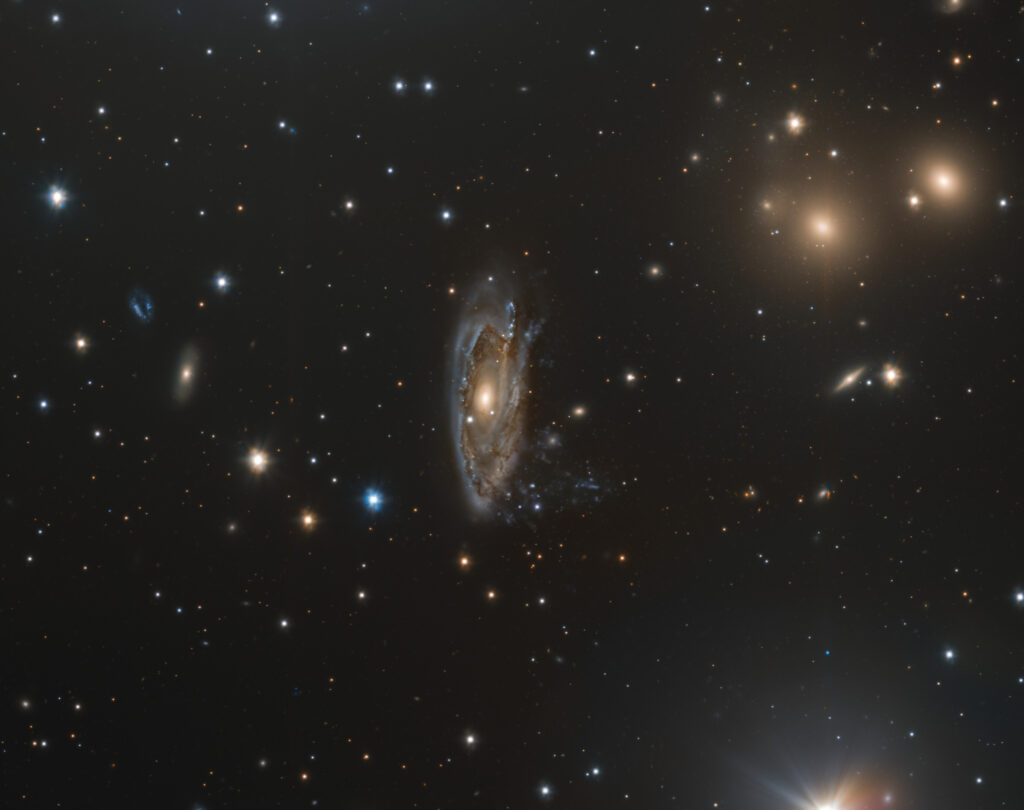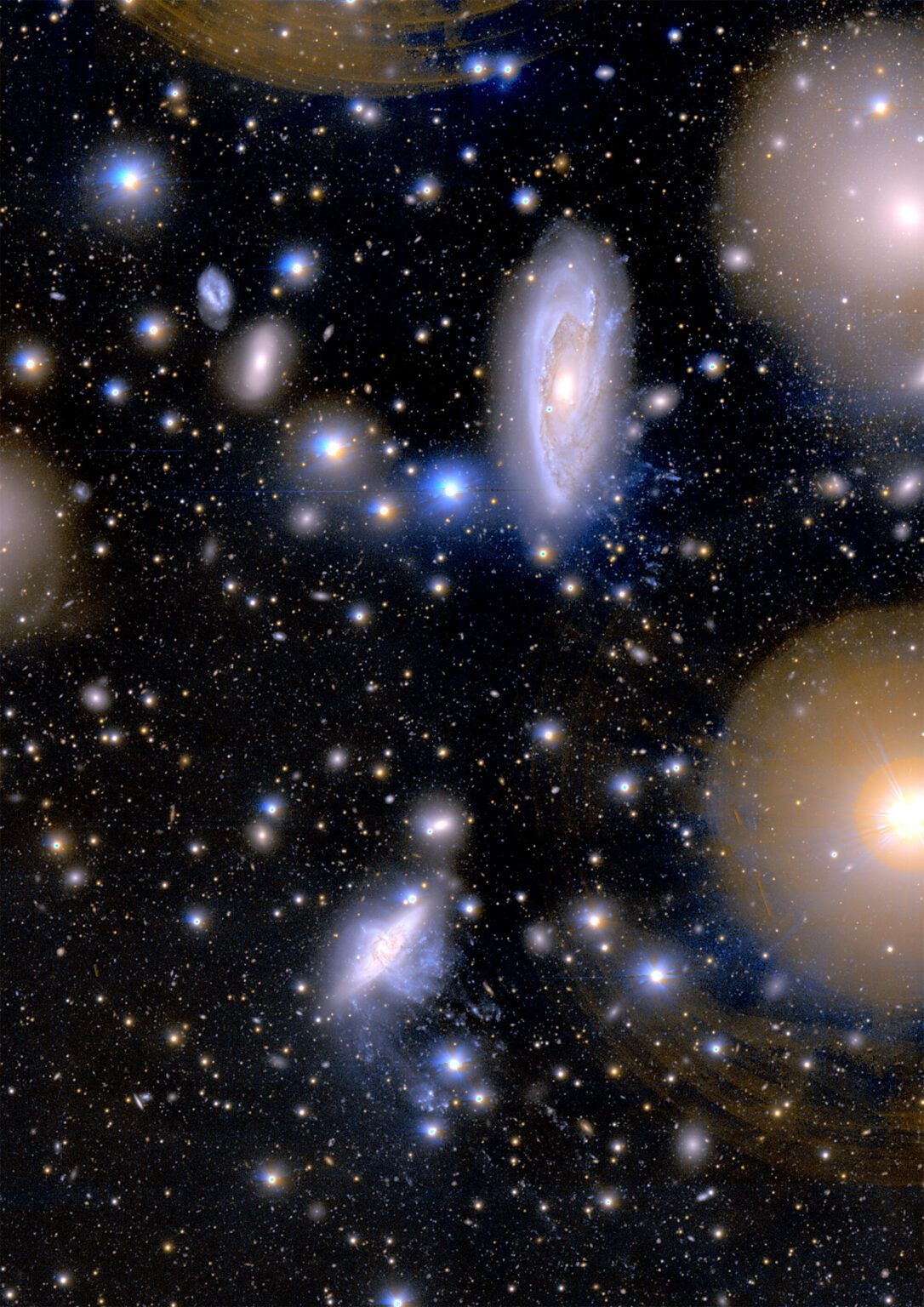The European Southern Observatory has published an image showing part of the Hydra cluster. In its center you can see the galaxy NGC 3312, which became a victim of a kind of cosmic “robbery”. It has lost almost all of its gas reserves.

The Hydra cluster is located 190 million light-years from Earth and is home to hundreds of galaxies. NGC 3312 is one of the largest of them.
Similar to our Milky Way, NGC 3312 is classified as a spiral galaxy. However, there are many obvious differences between the two. The spiral structure NGC 3312 is distorted and the matter inside the galaxy is perturbed. Moreover, it is followed by characteristic filamentary structures that look like jellyfish tentacles. They consist of gas ejected from NGC 3312.
Often the sources of such distortions are gravitational interactions with neighboring galaxies. However, that’s not the case with NGC 3312. It lost gas through a process known as pressurized detachment.
When a galaxy passes through the gas clouds that fill the cluster, those act as a kind of headwind, blowing off their gas and dust. This results in the formation of characteristic jellyfish-like plumes. Since cold gas is the raw material from which new stars are formed, galaxies affected in this way risk losing their ability to form stars.

Curiously, NGC 3312 neighbors another jellyfish-like galaxy NGC 3314 in the sky. Recently they both got on the image published by the observatory “Subaru” in honor of its 25th anniversary.


